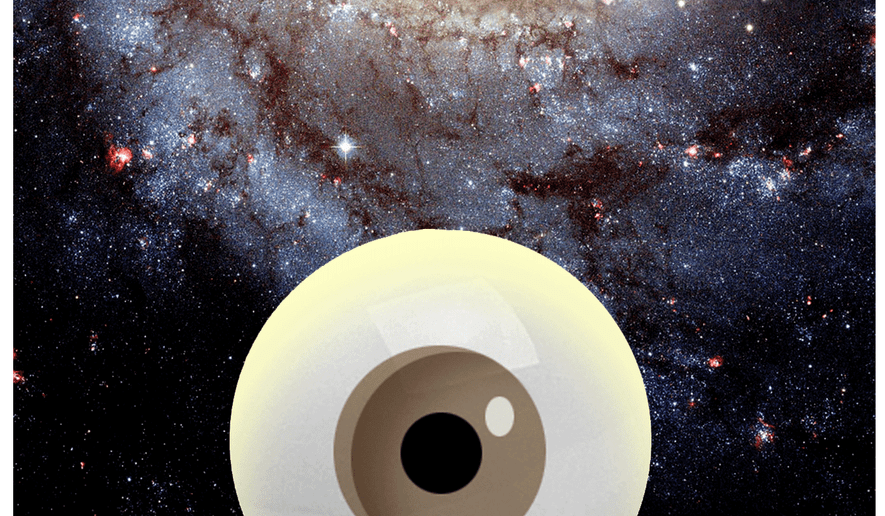OPINION:
Holiday gift-buying is over, the presents are unwrapped or even returned, and not much happens in the news. One can sit back and contemplate those moments in which the Christmas spirit overcomes worldly concerns, such as an impromptu sighting of a star on a dark night and wondering what it was like 2,000 years ago in Israel.
Or watching a baby smile, eliciting a mother’s tender touch. Or seeing a new father’s protective presence.
In “O Little Town of Bethlehem,” written in 1868, church rector Phillips Brooks of Philadelphia pondered the mixed reaction to the Savior’s birth:
Above thy deep and dreamless sleep
The silent stars go by
Yet in thy dark streets shineth
The everlasting Light
The hopes and fears of all the years
Are met in thee tonight
Hopes, yes. But fears? Certainly. Because if the Bible is true, and Jesus is who He said He is, then all of us have some ’splaining to do. And, given our nature, we hate to do that. But the good news is that all of us, even the most miserable sinner, have a way to salvation because that baby was born.
During this season of miracles, it’s a good time to reflect on everyone’s sheer, magnificent uniqueness.
Whether you believe in God and Christ or not, we are all wonders of unimaginable complexity. As Pigpen would say, “sort of makes you want to treat me with more respect, doesn’t it?”
As walking miracles, we comprise trillions of cells, each of which is a marvel of engineering with its own millions of moving parts.
“Think of the cell as a miniature society,” Reference.com offers in this accessible description. “Within its walls are factories, power plants, a leader, a packaging plant, a central gathering place and recycling stations. All work together to sustain the community.”
Now, you can argue that this all happened as a result of random, unguided accidents, or you can make the argument for design, which rests largely on irreducible complexity. That term, championed by Lehigh University biologist Michael Behe, means something that must be fully assembled and cannot logically come together gradually.
He uses a simple mousetrap as an example. Without all its parts — spring, platform, snap bar — it is useless. Mousetraps are an invention, the result of a guided process. How much more so are the fathomlessly complex cells whose parts must all work precisely together in order to allow our fathomlessly complex bodies and brains to function?
In “More than Meets the Eye,” Richard A. Swenson, M.D. has assembled a mind-boggling array of facts about the human body and brain that should leave any reader in a state of awe, regardless of theology.
The body has 10 to 100 trillion cells, with each cell having a trillion atoms. They are all coming and going at astronomical speed. “Every couple of days, we replace all the cells that line the intestine — faster if we eat Mexican food,” Mr. Swenson quips.
That person sitting next to you? Her eyes have retinas that contain 120 million rods and 7 million cones. “The rods accomplish dim vision, night vision, and peripheral vision. The cones are for color vision and fine detail.” The human eye can recognize literally millions of shades of colors.
Now, here’s the really astounding part: “To simulate 10 milliseconds of the complete processing of even a single nerve cell from the retina would require the solution of about 500 simultaneous nonlinear differential equations 100 times and would take at least several minutes of processing time on a Cray supercomputer. Keeping in mind that there are 10 million or more such cells interacting with each other in complex ways, it would take a minimum of 100 years of Cray time to simulate what takes place in your eye many times every second.”
Sort of gives the phrase “in the blink of an eye” new meaning, doesn’t it?
Given all the ways that human beings tick each other off, it helps to know just how much of a biological miracle that guy is who cut us off in traffic. It can afford us strange, new respect for others, especially those quite different from us.
A handy phrase to remember when we’re tempted to dehumanize someone for some reason is that “God don’t make no junk.” Or the memorable line from Psalm 139 about our being “fearfully and wonderfully made. Your works are wonderful.”
These are just some things to ponder while we shed millions of cells and acquire new ones, tapping out a text or reading an article as we await the dawning of a New Year.
• Robert Knight is a senior fellow for the American Civil Rights Union.




Please read our comment policy before commenting.